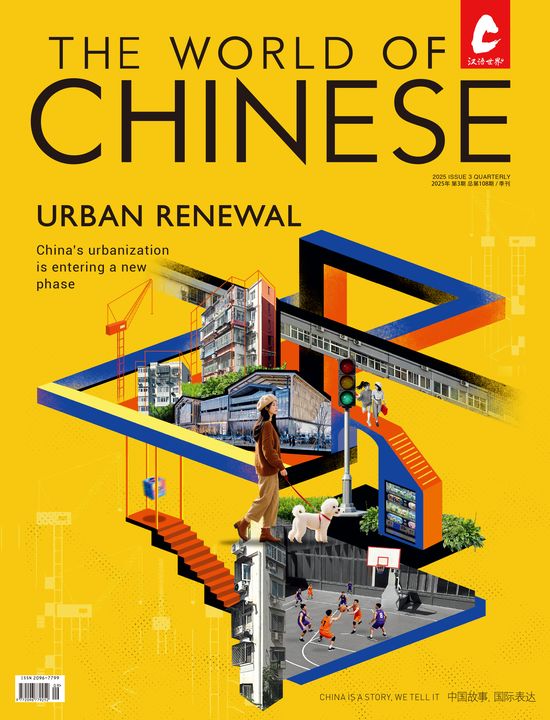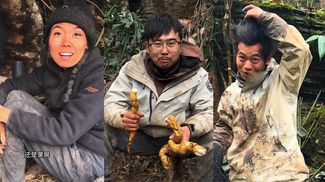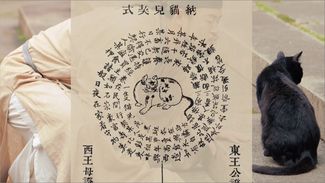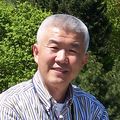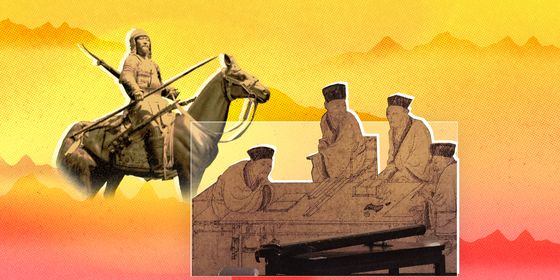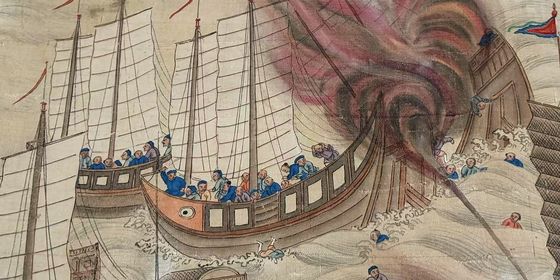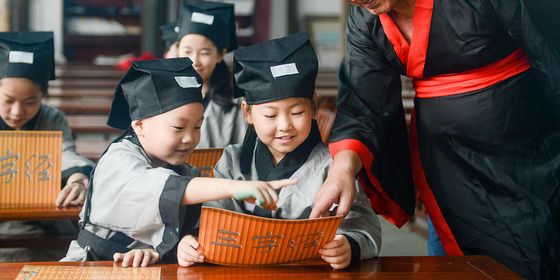Explore the character that encompasses birth, nurture, and education
Mother’s Day offers a moment to reflect on the often invisible labor of care, teaching, and emotional resilience that shapes our lives from the very beginning. Just as our ancestors worshipped fertility through art and ritual over 30,000 years ago, we continue to recognize the vital role mothers play in shaping our lives today. In Chinese, the character 育 (yù) captures this layered role with remarkable precision: it means “to give birth,” but also “to nurture” and “to educate.”
As far back as the second century, The Analytical Dictionary of Chinese Characters (《说文解字》) defined 育 as the act of teaching a child to do good deeds (育,养子使作善也). On the oracle bones over 3,000 years ago, the character for “birth” is quite self-explanatory. On top of the character is the shape of a woman, and on the bottom is an upside-down baby. Together, it creates the scene of a woman in labor.
Learn more Chinese characters:
- 爱: The Character Defining Love in Its Many Forms
- 游: Learn the Chinese Character for Journeys and Adventures
- 玩: The Character That Tempts Both Joy and Danger
Later still, as the character evolved, the pictographic quality gave way to evolved forms that were more standardized and easier to write. It was in the Han dynasty (206 BCE – 220 CE) that the character 育 first appeared in seal script. This time, the upside-down baby was put on top of the character, while the bottom radical, 月 (yuè), indicated its pronunciation. Together, they formed 育, meaning “to give birth (生育 shēngyù)”, “to raise, nurture (养育 yǎngyù)”, and “to educate (教育 jiàoyù),” all of which run through every phase of our life.
The character’s associations with birth and fertility continue to today. For example, 育龄 (yùlíng) refers to “childbearing age,” while “birth control” is 节育 (jiéyù). 绝育 (juéyù) means “to sterilize with medical methods,” while 不育 (búyù) indicates “infertility.” As the country with the largest population, China once implemented (计划生育 jìhuà shēngyù) or “family planning,” as one of its national policies in the 1980s. Recent policy changes now permit couples to have a third child and have dropped the previous promotion of late marriage and late childbirth, known as 晚婚晚育 (wǎnhūn wǎnyù).
Various factors can, however, disrupt “personal development or 发育 (fāyù).” For instance, it’s noted that “alcohol can affect the physical and mental growth of adolescents (酒精影响青少年身心发育 jiǔjīng yǐngxiǎng qīngshàonián shēnxīn fāyù).” Likewise, the concept also expands to the growth process of different entities, such as the inherent laws crucial for the “healthy development of markets (市场健全发育 shìchǎng jiànquán fāyù).”
The character 育 also symbolizes the emergence of new ideas and developments, such as “nurturing civilization (孕育文明 yùnyù wénmíng)”, “fostering new industries (孕育产业 yùnyù chǎnyè)”, and “cultivating skilled workers (孕育人才 yùnyù réncái)”.
Beyond reproduction, the character also encompasses nurturing, growth, and education. The Classic of Poetry (《诗经》), China’s earliest collection of poetry from the 11th century BCE, once expressed that a parent’s deep love starts with reproduction and continues through ongoing care and teaching: “My father gave me life; my mother nurtured me, cared for me, raised me, watched over me, looked after me, and worried about me, holding me close whenever I came and went. (父兮生我,母兮鞠我。抚我畜我,长我育我,顾我复我,出入腹我。)”
Infant and childcare is 保育 (bǎoyù), with caretakers (保育员 bǎoyùyuán) in kindergartens focusing on their daily needs. The act of nursing a baby is referred to as 育婴 (yùyīng). Historically, institutions like 育婴堂 (yùyīngtáng, baby care center) once existed to care for orphans during the early 20th century, showcasing the commitment to nurturing that goes beyond biological ties.
Of course, such care is not limited to children, but to plants and animals as well. For instance, 育苗 (yùmiáo) means “to grow seedlings,” while 育雏 (yùchú) refers to “feeding young birds.” On the other hand, 育林 (yùlín) highlights the importance of cultivating forests, emphasizing the need to “ban logging, grazing, and cultivation during certain periods to protect natural areas for growth (封山育林 fēngshān yùlín).”
In the field of education, 育 remains a key theme. Schools aim to “nurture talented individuals (育才 yùcái),” often incorporating this mission into their names, such as 育才学校 (yùcái xuéxiào, Nurturing Talent School). Educators often use the phrase “教书育人 (jiāoshū yùrén)” to describe their dual responsibilities of “teaching and nurturing students.” Moreover, schools usually integrate various lessons into their curriculum, such as “emphasize life education (加强生命教育 jiāqiáng shēngmìng jiàoyù)” to help mitigate potential risks among students.
Alongside that, modern education emphasizes all-around development, including “moral education (德育 déyù)”, “intelligence education (智育 zhìyù),” “physical education (体育 tǐyù),” and “aesthetic education (美育 měiyù).” This approach also echoes the philosophy of Mencius during the Warring States period (475 – 221 BCE): “Respect the virtuous and cultivate talented individuals, and commend virtuous people (尊贤育才,以彰有德 zūn xián yù cái, yǐ zhāng yǒudé).”
Throughout the journey to adulthood, 育 seems to be a constant theme in our lives. It makes us who we are, and, for better or worse, our species marches on.
This is a story from our archives. It was originally published in 2016 and has been edited and republished. Check out our subscription plans that will give you access to more great stories!
